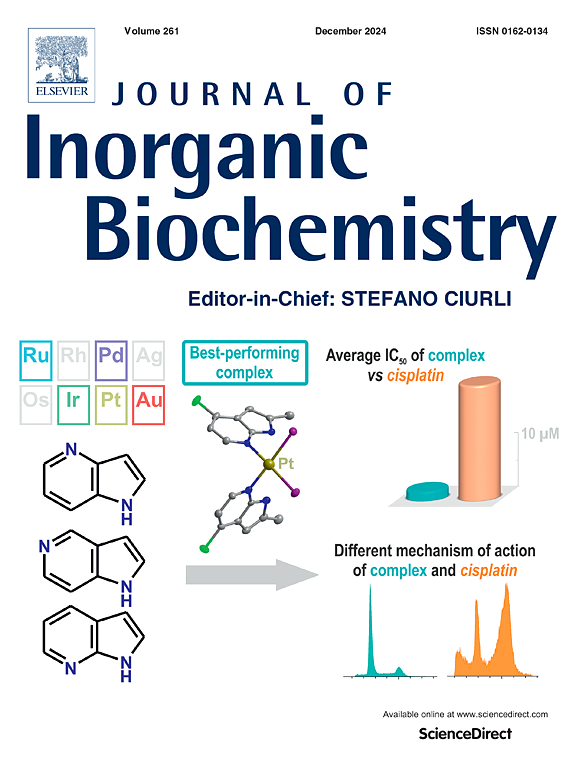The synthesis and characterization of a new ligand, 1-(bis(pyridin-2-ylmethyl) amino)-2-methylpropane-2-thiolate (BPA
Me2S
−) and its nonheme iron complex, Fe
II(BPA
Me2S)Br (
1), is reported. Reaction of
1 with O
2 at −20 °C generates a high-spin iron(III)-hydroxide complex, [Fe
III(OH)(BPA
Me2S)(Br)] (
2), that was characterized by UV–vis,
57Fe Mössbauer, and electron paramagnetic resonance (EPR) spectroscopies, and electrospray ionization mass spectrometry (ESI-MS). Density functional theory (DFT) calculations were employed to support the spectroscopic assignments. In a previous report (
J. Am. Chem. Soc. 2024,
146, 7915–7921), the related iron(II) complex, Fe
II(BNPA
Me2S)Br (BNPA
Me2S
− = (bis((6-(neopentylamino)pyridinyl) methyl)amino)-2-methylpropane-2-thiolate) was reported and shown to react with O
2 at low temperature to give a rare iron(III)-superoxide intermediate, which then converts to an S‑oxygenated sulfinate as seen for the nonheme iron thiol dioxygenases. This complex includes two hydrogen bonding neopentylamino groups in the second coordination sphere. Complex
1 does not include these H-bonding groups, and its reactivity with O
2 does not yield a stabilized Fe/O
2 intermediate or S‑oxygenated products, although the data suggest an inner-sphere mechanism and formation of an iron‑oxygen species that is capable of abstracting hydrogen atoms from solvent or weak C
![]()
H bond substrates. This study indicates that the H-bond donors are critical for stabilizing the Fe
III(O
2-•) intermediate with the BNPA
Me2S
− ligand, which in turn leads to S‑oxygenation, as opposed to H-atom abstraction, following O
2 activation by the nonheme iron center
.


